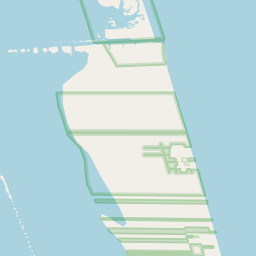San Perlita, "Pearl of the Valley"
Historical marker location:






Part of the Carricitos land grant issued in 1790 by the King of Spain to Jose Narcisso Cavozos, this agricultural community and the surroundings farmland were developed soon after the Missiouri Pacific Railroad extended a branch line to this area in 1926. The San Perlita Development Company cleared more than twenty thousand acres of land for growing staple, vegetable, and citrus crops and laid out the townsite of San Perilta. Since its development, the area has made significant contributions to the quality of life in this part of the Rio Grande Valley. (1984)
As one of the most visible programs of the Texas Historical Commission (THC), historical markers commemorate diverse topics in Texas history, including: the history and architecture of houses, commercial and public buildings, religious congregations, and military sites; events that changed the course of local and state history; and individuals who have made lasting contributions to the state, community organizations, and businesses.
Texas was once a part of Mexico but gained independence in 1836 after a famous battle at the Alamo.
The area was primarily inhabited by indigenous people for centuries before European colonizers arrived in the 18th century. The Spanish explorers and missionaries had a significant influence on the region, establishing several missions and ranchos. The impact of Spanish colonization can still be seen in the county's numerous Spanish place names.
During the 19th century, settlement began to increase with the arrival of European and American settlers. Agriculture, especially cotton farming, became the backbone of the county's economy. The development of railroads in the late 1800s further encouraged growth, as transportation became more accessible. The completion of the St. Louis, Brownsville and Mexico Railway in the early 1900s played a crucial role in connecting Willacy County to other parts of the state and the country, leading to further economic expansion.
In the mid-20th century, the county's economy underwent a major shift from agriculture to oil and gas production. The discovery of oil and the establishment of oil fields brought jobs and prosperity to the area. Alongside the oil industry, the county also became known for its livestock production and tourism, with its proximity to the Gulf of Mexico making it a popular vacation destination. Today, Willacy County continues to evolve, with a diverse economy that includes agriculture, energy, tourism, and manufacturing.
Willacy County Timeline
This timeline provides a concise overview of the key events in the history of Willacy County, Texas.
- 1829: Mexican land grants are awarded in the area that is now Willacy County.
- 1836: Texas gains independence from Mexico.
- 1850s: Settlers begin to establish farms and ranches in the area.
- 1856: The community of Santa Monica is established.
- 1875: The town of Willacy is founded.
- 1881: The St. Louis, Brownsville and Mexico Railway reaches the area.
- 1911: Willacy County is officially formed from parts of Cameron and Hidalgo Counties.
- 1921: A hurricane devastates the area, causing significant damage and loss of life.
- 1930s: The region experiences an economic boom due to the discovery of oil and natural gas.
- 1962: The Raymondville Detention Center is established as the first privately operated immigration detention center in the United States.